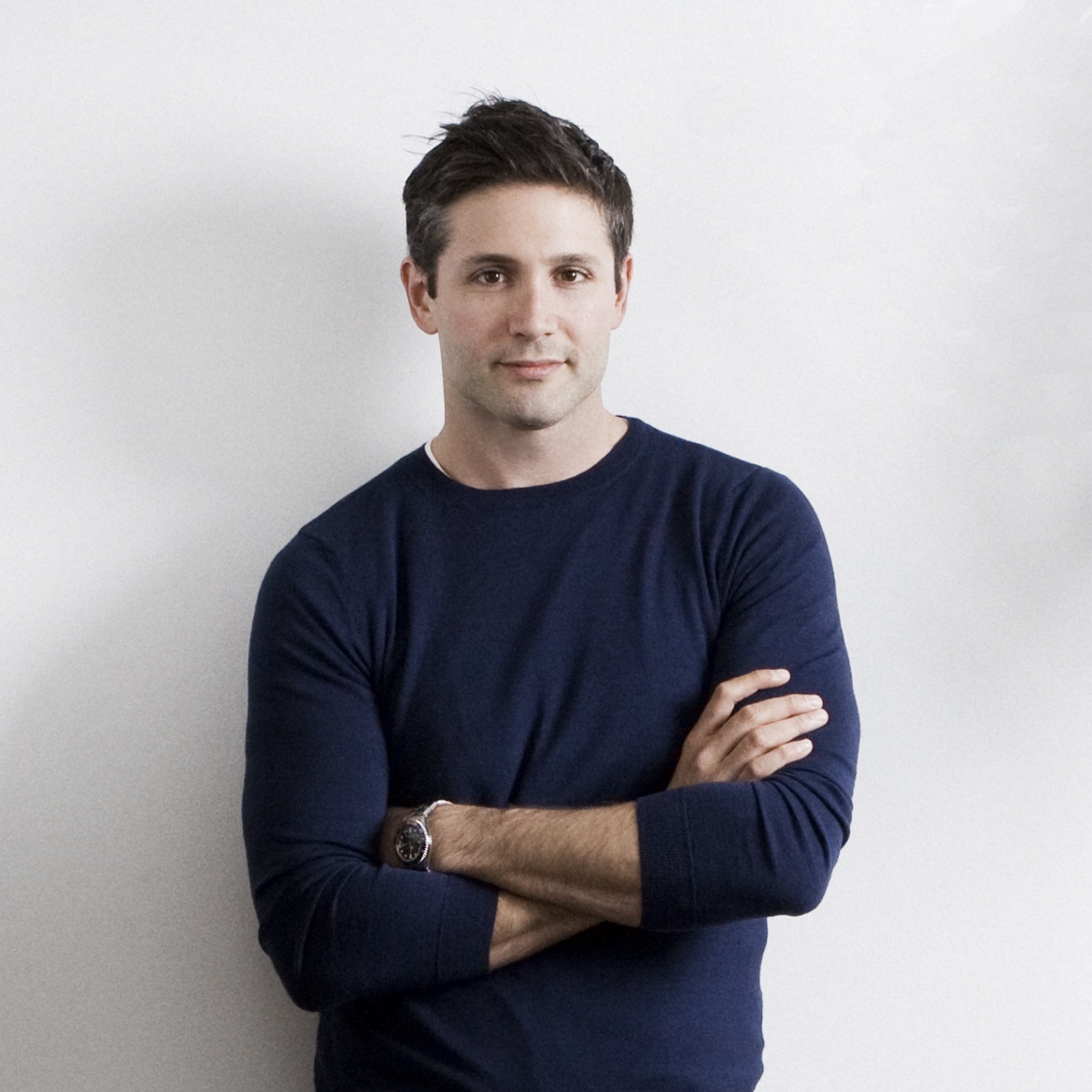Architecture’s Red Carpet

ABOVE: MARC KUSHNER
In 2009, New York-based architect Marc Kushner started Architizer as part community forum, part blog, and part peer-review group. But in the subsequent years, it has become something more: something along the lines of a modern, interactive network for architects, drawing favorable comparisons to institutions on the order of the Academy of Motion Picture Arts and Sciences. Appropriately, in 2013, Architizer launched its own awards gala, the A+ Awards, inviting more than 200 jurors in from all over the world, and from all walks of life, to determine best-in-class across more than 50 categories—from best single-family home of less than 1,000 square feet to best parking structure, best airport building, and best memorial. As Kushner readied for tonight’s Second Annual A+ Awards ceremony, he spoke with us about the politics of architecture, Instagram’s effect on the medium, and the future feel of buildings.
CHRIS WALLACE: The A+ awards are, perhaps inevitably, being called the Oscars of architecture. Is that analogy something that you’re comfortable with?
MARC KUSHNER: Oh, yeah. Actually, when we launched, we did what I like to think was a provocative little video, comparing the Pritzker Prize—which has one winner once a year—to the Oscars, the Grammys, and the Webbys. The Oscars have something like like 60 winners every year. We just thought, why don’t we have that? This year we had 60-some categories and more than 300 jurors.
WALLACE: So, to draw out that analogy a little bit—do you feel as though, with all of those categories, that you are, even more than the Oscars, broadly representative of the medium? It’s not as if there is the little independent building that doesn’t have broad distribution. Everybody submits, right? It’s sort of democratic in that way.
KUSHNER: The only criteria for our typology categories are that the building needs to have been completed in the last three years. Then we have these things called the Plus categories, which don’t even have to be built. They can just be ideas.
WALLACE: The Plus categories are a natural bridge to what I’m getting at, which is that architecture is inherently political—what goes where, who gets to use it, how it’s employed… How much of the jury’s decisions are based on all of that other information, and not just on aesthetics?
KUSHNER: I think you were onto something when you said democratic. Architecture is everywhere, and we all use it. So what we tried to do was to create an award program that was as vast as architecture’s footprint—no limit on typology, and no limit to who could judge the success of a building. So our jurors aren’t just architects, because what’s the point of having architects telling other architects what a good building is? We have fashion designers, and not fashion designers. [laughs] We have politicians on the jury, actors, chefs… Literally anyone that comes in contact with a building, and our theory is that can be everybody. And that’s good for the profession.
WALLACE: Let’s play into the Oscars thing again. What would be the dream endgame for these awards? Would it be that the winning and nominated architects and creators go on to some sort of notoriety, and have an easier road in getting their next projects made? Or is it that the audience starts to think differently about intent and purpose and shape and form?
KUSHNER: I think it’s closer to the latter. An unintended consequence of the A+ Awards is that we’ve seen a local galvanizing around the projects. People get nominated through the public voting process, every category gets five, and, last year, in the Lehigh Valley, there was a project nominated—this awesome, reused industrial site—and the local papers covered it and told the local population, “Check this out, look at how amazing it is that we got nominated for this award.” And we’re seeing that, now, with the winners, local media is telling these local constituencies how awesome these buildings are. So what you get is a kind of recognition of communities taking a risk, or just thinking slightly outside of the box about what the community can do for them. So it’s a vindication in a way, of awesome buildings and the people who sponsor them.
WALLACE: I’m on the train yesterday and I’m listening to these two young guys, say, like, “Yo, my dream is to start this artisanal croissanteria.” [laughs] That’s how far food culture has gone. Is architecture next?
KUSHNER: Shit, Chris, you took my whole thesis and put it in an adorable story. [laughs] My big theory is that social media has liberated architecture. It has liberated us from the dominant style. Whatever used to reign—in the ’70s it was post-modernism, in the ’80s it was brutalism, in the ’90s it was deconstructionism—we don’t have that anymore, because social media makes us all massive consumers of architecture. And social media does best with novelty. We crave novelty. And you crave uniqueness of location, right? Because, what’s the point of going to Germany and taking pictures of buildings in Berlin that look exactly like buildings in New York? That’s become an impetus to re-embrace localism, the same kind of localism that we’ve seen with food and clothing and craft—Brooklyn being the most ridiculous example of it, right? I can buy whiskey that was brewed here, and that’s different from whiskey that was brewed somewhere else. So last year, for instance, our building of the year was Barclays Stadium. When SHoP accepted the award for the building, he made the point that this is a uniquely Brooklyn building—not the red-brick, historical-pastiche bullshit that you get in the 10 other stadiums that were built before it all over the country. We want our buildings to be different, and to reflect our unique societies.
WALLACE: Has the process of starting Architizer, and then the A+ awards, similarly liberated you and your way of thinking?
KUSHNER: I’m still a practicing architect. I still have an architecture firm, but I think the big lesson is that people want to love buildings. They want to love the places where they spend their time, and buildings are storytellers. We just need to find a way to connect to people, and give them those access points—basically, to speak their language and not our language, which we’ve been doing for a really long time.
WALLACE: It is almost like a peer group, but it extends beyond just that. So, when you see something like the Olympic nonsense in Rio, do you go “ugh,” or do you see things like that and think, “This is what we’re doing wrong, we can mobilize, to do things better in the future”?
KUSHNER: We haven’t totally self-corrected yet. Architects like to use words that only we understand, and we like to dress a certain way that only we like. [laughs] All black. And it extends to our architectural vocabulary, where you’ll see buildings that are so self-referential to the field that there’s no way that anyone’s appreciating them on their own terms. You need to have a knowledge of the whole historical, academic discourse of architecture to understand what this building does. That’s bad. Those are the buildings that piss me off. I don’t begrudge an architect for a building being too big, or for going over budget. That’s rarely their fault. It’s more, is the building for the public? Or is it inside baseball; is it for the architects? That’s when architecture really falls on its face.
WALLACE: Obviously the 9/11 memorial is in there, but were there any buildings that just completely surprised you?
KUSHNER: That’s the thing about this! For the most part, I was completely shocked by the winners. They weren’t even on my radar. I had been to Dubai, and I had seen this Cayan Tower, by SOM—this twisty high-rise. That’s awesome, that’s an iconic building that’s been covered by the press since it started, but I didn’t know about Craft Architectos, and I definitely didn’t know about their small house, which is called Trevox 223—this shiny, little box that’s not like anything I’ve ever seen before. So, the power of discovery of this—that we’re unearthing talent that hasn’t hit mainstream press—is really exciting.
WALLACE: We often think of “architecture” as massive, long-lasting structures, but, recently, we’re seeing more temporary building, and perhaps getting a more elastic understanding of the form. Are you seeing new schools of thought, new revolutions of aesthetics? Are there things that you’re getting excited about going forward?
KUSHNER: I’m actually working on a book about that, so my thoughts will be completely formulated shortly. [laughs]
WALLACE: Can you give us a preview?
KUSHNER: I can. For me it is about expanding on these global trends. It’s very easy to say, “3-D printing is a thing,” but how does that actually apply to architecture? I think it’s about this mass customization in architecture. Every building is unique, and every building is customized—we’re not an assembly-line industry; everything’s a one-off—but we tend to make them out of the same constituent parts. What’s really exciting is the tactility of a building. That is going to be customized to the right environment, the right socioeconomic environment, the right ultimate user, and we’re going to see wild changes in the way we touch and feel a building.
WALLACE: Wow. Well, thanks for your time, Marc. I’m sure you have to go get your tux on.
KUSHNER: [laughs] I have to see if I can still fit into it.
THE SECOND ANNUAL ARCHITIZER A+ AWARDS WILL BE HELD THIS EVENING AT HIGHLINE STAGES. FOR MORE ON ARCHITIZER, VISIT THE WEBSITE.






